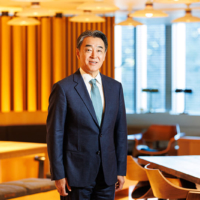The Japanese Society of Psychiatry and Neurology formally has officially decided to use a new Japanese term for schizophrenia to help increase public understanding of the disorder and reduce discrimination faced by patients and their families.
An extraordinary council meeting of the society in Tokyo decided Saturday to adopt the term "togo shiccho sho" ("loss-of-integration disorder") to replace "seishin bunretsu byo" ("split-personality disorder").
Council members said the name change is intended to eliminate the idea that patients have split personalities, as symptoms of schizophrenia vary.
Medical institutions started using the new term Sunday, and the society will take advantage of the 12th World Congress of Psychiatry to be held in Yokohama in late August to publicize the change, according to the members.
Along with related organizations, the society will also ask the government to use the new name in legal and other matters.
But the old and new names might coexist for the time being as the government wants to decide on the change after seeing to what extent the new name is adopted, medical industry sources said.
In 1911, Swiss psychiatrist Emil Bleuler coined the term schizophrenia to describe the dissociative condition of the mind in which patients are unable to appropriately associate ideas, such as linking hot weather with the sun.
The society adopted seishin bunretsu byo in 1937 based on a translation of the German name, but "bunretsu sho" (split-mind disorder) was also used until 1989, when the name was unified.
The National Federation of Families with Mentally Ill in Japan (Zenkaren) in 1993 asked the society to change the name to help dispel misconceptions and prejudice.
Current estimates put the number of schizophrenia patients in Japan at about 600,000.

















With your current subscription plan you can comment on stories. However, before writing your first comment, please create a display name in the Profile section of your subscriber account page.